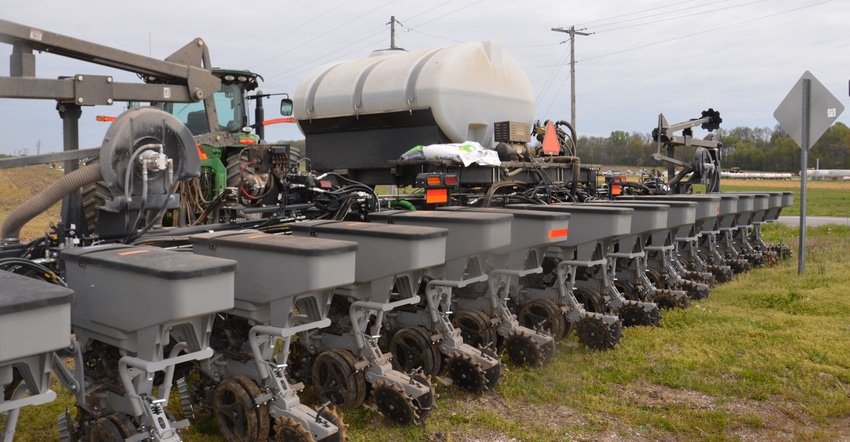
The best science available says that if you apply starter fertilizer in corn, there is less than a 50-50 chance you will see a yield increase. However, 4 out of 5 times, you can count on harvesting corn that is around 1 percentage point drier. In a year when energy prices are through the roof, a strong chance of reducing drying costs may make applying starter fertilizer more appealing. And if you harvest more bushels, it’s a bonus.
The science here consists of 52 field-scale research trials, conducted either at Purdue University ag centers or on farms, since 2014. Bob Nielsen, a Purdue Extension corn specialist, and Jim Camberato, Purdue Extension soil fertility specialist, carried out the trials, assisted by graduate students.
Here is a closer look:
Faster plant growth. One thing applying starter fertilizer does nearly every time is speed up plant development and dry-matter accumulation, Nielsen says. “The enhanced early growth results from plants literally being at an advanced growth stage compared to plants that don’t get starter fertilizer,” Nielsen explains.
Don’t expect pop-up fertilizer, defined as fertilizer placed in-furrow with the seed, to speed up growth rate as much as higher nitrogen rates applied in a 2-by-2 fertilizer placement, Nielsen says.
Drier grain. Plants grown with starter fertilizer tend to silk earlier, reach black layer quicker and turn out drier grain at harvest, Nielsen says. Using starter fertilizer resulted in dryer grain 78% of the time, with grain moisture being anywhere from 0.6 to 1.4 percentage points lower. The average was 1 percentage point lower.
“We often saw drier grain at harvest even when grain yield didn’t respond to starter fertilizer,” Camberato says.
Yield impact. Starter fertilizer increased yield in 13 of 33 trials in continuous corn, Nielsen says. The average increase was 8.5 bushels per acre but varied from 2.5 to 18.4 bushels. Three locations were no-till, and they produced the highest responses. Of 18 trials with starter in a corn-soybean rotation, starter fertilizer rates of 20 to 45 pounds per acre increased yield in 8 of 18 trials. The average increase was 6.5 bushels per acre, ranging from 2.7 to 11.7 bushels.
Pop-up fertilizer was applied in 21 trials, either as 3 gallons of 10-34-0 or 5 gallons of 6-24-6 per acre. Pop-up boosted yield in only 1 of those 21 trials, by 6.5 bushels per acre. Yield decreased twice, by 3.3 and 5.4 bushels.
Starter fertilizer economics. The extra cost of applying starter fertilizer is minimal if your planter is already set up to do so, Camberato reports. In fact, if you’re only applying nitrogen and decreasing sidedressing rate based on the amount applied as starter, there’s no extra cost except for the time it takes to refill planter tanks, he says.
“You should pick up savings on drying costs, and may or may not see a yield increase,” Camberato says.
Guessing when you could see extra yield is difficult, he says. In rotation corn trials, they saw response in 3 of 5 no-till fields, 2 of 5 strip-till fields and 3 of 8 chisel-plowed fields.
About the Author(s)
You May Also Like




